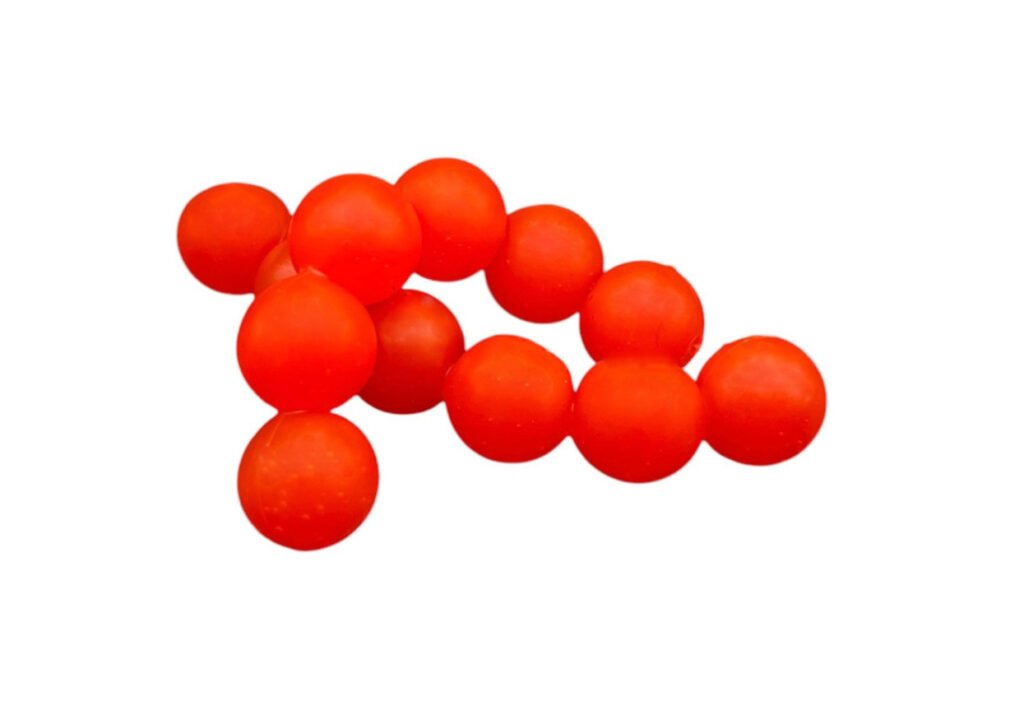Choosing the Right Soft Bead Colour and Size for Fishing
Fishing is an art that requires precision, patience, and the right tools. Among the many accessories available to anglers, soft beads have become increasingly popular due to their versatility and effectiveness. Whether you’re a seasoned angler or a beginner, selecting the right soft bead colour and size can significantly impact your fishing success. In this article, we’ll explore how to choose the perfect soft beads for your fishing needs, ensuring you’re well-equipped for your next adventure.
Why Soft Beads Are Essential for Fishing
Soft beads are small, flexible accessories that mimic the appearance of fish eggs or other natural prey. They are commonly used in fly fishing, float fishing, and other techniques to attract fish. Unlike hard beads, soft beads are more lifelike and can move naturally in the water, making them irresistible to fish.
Additionally, soft beads are available in a wide range of colours and sizes, allowing anglers to tailor their setup to specific fishing conditions. Whether you’re targeting trout, salmon, or steelhead, soft beads can be a game-changer in your fishing strategy.

How to Choose the Right Soft Bead Colour
Selecting the right soft bead colour is crucial for attracting fish. Here are some factors to consider:
1. Water Clarity
In clear water, natural and subtle colours like peach, cream, or light pink work best. These shades closely resemble real fish eggs and are less likely to spook fish. On the other hand, in murky or stained water, brighter colours like orange, chartreuse, or fluorescent pink can stand out and grab the attention of fish.
2. Fish Species
Different fish species are attracted to different colours. For example, trout tend to prefer softer, natural hues, while salmon are often drawn to vibrant shades like red or orange. Therefore, research the preferences of your target species to make an informed choice.
3. Lighting Conditions
The time of day and weather conditions can also influence your choice of soft bead colour. For instance, in low-light conditions, such as early morning or overcast days, opt for brighter colours that are more visible. Conversely, in bright sunlight, softer tones may be more effective.
Check out BeadnFloat’s soft bead selection:
Selecting the Perfect Soft Bead Size
The size of your soft beads is just as important as the colour. Here’s how to choose the right size for your fishing needs:
1. Match the Hatch
One of the most effective strategies is to match the size of your soft beads to the natural prey in the water. For example, if the fish are feeding on small eggs, use smaller soft beads (e.g., 6mm or 8mm). Conversely, if the prey is larger, opt for bigger beads (e.g., 10mm or 12mm).
2. Consider the Fish Species
Larger fish, such as salmon or steelhead, may be more attracted to bigger soft beads, while smaller species like trout might prefer smaller sizes. As a result, adjust your bead size based on the fish you’re targeting.
3. Fishing Technique
The size of your soft beads should also align with your fishing technique. For instance, if you’re using a float rig, smaller beads may work better to create a natural presentation. In contrast, bottom-bouncing techniques may require larger beads to stand out.
Tips for Using Soft Beads Effectively
Now that you know how to choose the right soft bead colour and size, here are some additional tips to maximize their effectiveness:
1. Combine Colours for Added Appeal
Don’t be afraid to experiment with multi-coloured soft beads. Combining complementary colours, such as orange and pink, can create a more enticing presentation.

2. Adjust Based on Conditions
Fishing conditions can change throughout the day, so be prepared to switch up your soft bead colour and size as needed. Therefore, carry a variety of options in your tackle box to stay adaptable.
3. Use Beads with Other Lures
Soft beads can be used alongside other lures, such as flies or spinners, to enhance their effectiveness. For example, adding a soft bead to a fly rig can create a more realistic and attractive setup.
Common Mistakes to Avoid
While soft beads are highly effective, there are a few common mistakes anglers make when using them:
1. Using the Wrong Size
Using beads that are too large or too small for the target species can reduce your chances of success. Therefore, always match the bead size to the fish and the conditions.
2. Overlooking Colour Preferences
Ignoring the colour preferences of the fish you’re targeting can result in fewer bites. As a result, take the time to research and experiment with different colours.
3. Neglecting Water Conditions
Failing to consider water clarity and lighting conditions can make your soft beads less effective. Consequently, always tailor your bead choice to the environment.
Conclusion
Choosing the right soft bead colour and size is a critical aspect of successful fishing. By considering factors such as water clarity, fish species, and lighting conditions, you can select the perfect soft beads for your needs. Additionally, experimenting with different combinations and techniques can help you refine your approach and increase your chances of landing a catch.
Remember, fishing is as much about strategy as it is about skill. With the right soft beads in your tackle box, you’ll be well-prepared to tackle any fishing challenge that comes your way.



Add comment